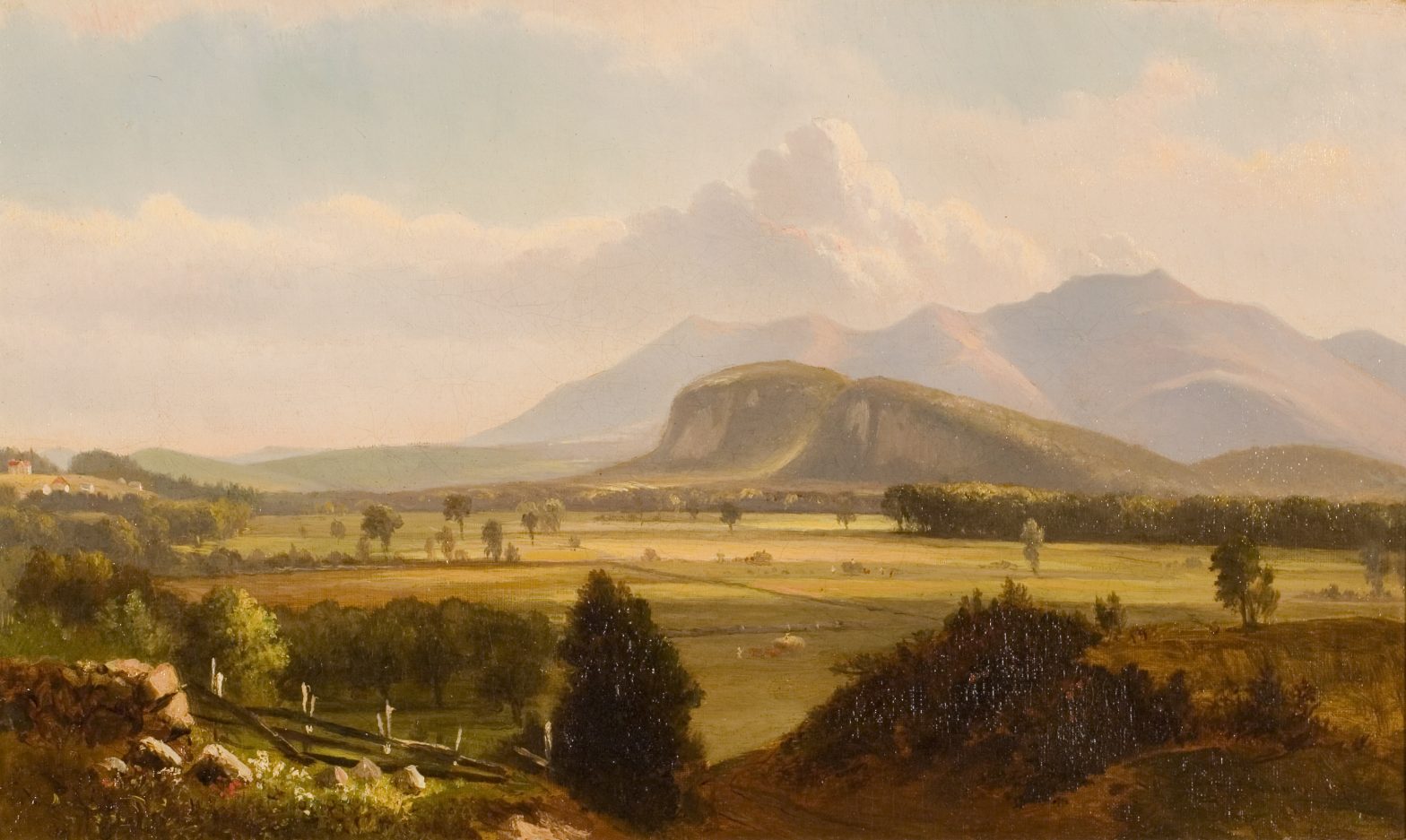A pair of shows on view at The Fralin Museum of Art at the University of Virginia shine a spotlight on arts, culture, and the very existence of two groups of Indigenous people in North and Central America. “N’Dakinna Landscapes Acknowledged” and “Look Three Ways: Maya Painted Pottery,” curated by Adriana Greci Green, The Fralin’s curator of Indigenous Arts of the Americas and Dorie Reents-Budet, research associate at the National Museum of Natural History, center on work drawn from the museum’s collection.
“N’Dakinna Landscapes Acknowledged” takes an innovative approach to presenting landscapes by members of the White Mountain School of painting, which flourished in New Hampshire during the 19th century. Similar to, though lesser known, than the Hudson River School, it shared some prominent Hudson River artists. Featured in this show are works by White Mountain painters Benjamin Champney, Samuel Lancaster Gerry, Samuel W. Griggs, and Sylvester Phelps Hodgdon.
As the robust American landscape painting tradition reveals, the land—its beauty and vastness—was a source of enormous inspiration and pride for newly arrived settlers. America’s great expanses represented a present-day Garden of Eden that was theirs to inhabit and tame into cultivation. This reverence was far-reaching, extending even to those who might never actually see these places in person. Champney’s paintings, for example, were often reproduced as chromolithographs that were widely distributed.
This perspective ignores the fact that the land had been inhabited for millennia by a whole host of Indigenous peoples who had very different ideas about the land and its stewardship. N’Dakinna (homeland) is the Abenaki’s (People of the Dawn Land) name for this area, which they have occupied for 13,000 years. The Fralin show asks us, when looking at these beautiful paintings, to consider the Abanaki and their relationship to the land.
As we navigate the choppy waters toward a more accurate understanding, the trick is to hold two different realities in one’s mind, acknowledging the experience of loss—of people, land, and culture, known as territory acknowledgment—and yet appreciate these paintings for what they are: beautiful landscapes that provide an incredibly valuable snapshot of what pre-industrial America looked liked.
Champney’s “Moat Mountains from Intervale” depicts a broad vista of cultivated valley before a backdrop of the dramatic geological formations known as the Ledges, with mountains beyond. The picture is surprisingly small given the grandiosity of the scene, but there’s an appealing intimacy to its size. The other works, oil on paper studies, provide charming pastoral vignettes, with Gerry’s view of a twisted tree against a blazing evening sky possessing a moodiness reminiscent of the almost contemporaneous German Romantic painters.
In addition to the paintings, two maps included in the exhibition speak to the Indigenous people’s relationship with the land. One, a topographical map Greci Green produced in collaboration with Chris Gist of UVA’s Scholars Lab, features the Abenaki and neighboring nations, the Haudenosaunee and Wabanaki, spelled out in a striking orange font across the map. The bold, flat writing effectively subverts the map’s imposed borders, proclaiming whose land it really was.
“My own work is very much focused on Indigenous Native sovereignty and treaties,” says Greci Green. “When I think about art and landscape, I see it through those lenses.”
The other map, made in 1852 by cartographer Franklin Leavitt, features superimposed reproductions of the paintings placed where they were made, as well as a vintage postcard and a stereographic photograph. These latter two, which feature Abanaki posing for the camera, are souvenirs of the tourist industry that emerged around them. “These pictures of Abenaki basket makers at tourist spots highlight how these artists remain there in this landscape and are engaged with the local touristic economy,’’ says Greci Green.
“Look Three Ways: Maya Painted Pottery” explores the rich tradition that flourished on the Yucatan Peninsula during the first millennium. Included in the show are works from The Fralin’s impressive collection of this art form, dating from 250–900 CE. Over the years, certain of these pieces have been displayed in the museum’s study center for the benefit of students, but the collection has never been displayed in this fashion before.
The vessels vary from everyday uses to ceremonial objects important to feasts that could be celebratory in nature, or important political events between different groups. They share a similar palette of red, black, soft terracotta, and cream, and the shapes of the vessels are simple: rounded bowls of different sizes, their fubsy form derived from gourds, some footed, and tall cylindrical drinking vessels.
The title of the show alludes to the three ways the works are analyzed by scholars: interpreting the Maya hieroglyphic writing that decorates the vessels, the style of the pot—it’s size and shape—and finally, instrumental neutron activation analysis which can identify the place where the pot was made.
There is a poignancy to what is on view at The Fralin, an unmistakable sense of loss and displacement, of precious relics of obliterated human experience. But there is also a vibrancy in the artistry, a chance to sense what was so widely destroyed, and appreciate those who came before.
